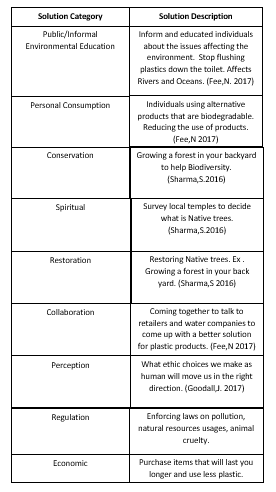Microplastics what are they, Microplastics are plastic pieces that measure less than five millimeters across.
Microplastics are found everywhere from the air that we breathe to the water that we drink and the clothes that we wear. Microplastics are also found in the food we consume and ladies it is also found in lip glosses tints.
This microplastics is created by humans. Once that the plastics has been disposed with the heat and environment it starts to degrade into small particles or fragments and that turns into microplastics. The plastics get in the water streams as in lake, rivers and oceans. Microplastics are located all over the world. Microplastics is created by all the plastic that is used on a daily basis by humans.
Microplastics is problematic to both humans and the environment. Microplastics are in the water that we drink which means that microplastics are in the human body. Microplastics could also enter the blood stream of a human being. Although the studies have not shown exactly how microplastics affect a human. Some plastics are known to cause cancers and other effects on the body. For the environment we have only been using plastic since the 1950's and there is so much plastic pollution all over the world. Plastics affects the environment in many ways for one it takes a very long time for the cycle of the breakdown of plastic. Once that the breakdown has occurred it then releases the microplastics that go back in the water and the air. Animals are affected by this pollution of plastic. Many animals eat or get stuck in the plastic and sadly some die. This also affects the environment ecosystems. Plastic could also release toxins that could affect the reproduction in some animals.
I took photos and made a collage of just the start of my morning and lunch time the amount of plastic that I touch, and I am not proud, but I also contributed to the plastic pollution that we are currently facing today. I did not realize how much plastic that I purchase and use on a daily basis. The collage is just a snapshot of some of my morning. I work with Plastic resin every day for the past 16 years. Again, I am not proud to say that I contribute to this pollution I plan to teach my family and make the change not use or buy things that are not biodegradable. I would like my daughter to be able to have a clean environment to live and breathe in.
Citation's:
https://alamo.instructure.com/courses/1451634/pages/activity-3-dot-3-3-plastic-waste-microplastics-core-activity?module_item_id=23015395#:~:text=National%20Geographic%20Magazine.%20(n.d.).%20Plastics,https%3A//www.nationalgeographic.com/environment/planetorplastic/%23/1234356803947
https://alamo.instructure.com/courses/1451634/pages/activity-3-dot-3-3-plastic-waste-microplastics-core-activity?module_item_id=23015395#:~:text=your%20task%20below-,Dudas%2C%20S.%20(2018).%20Microplastics%20are%20everywhere%20%5BVideo%5D.%20TEDx%20Binghampton%20University,Microplastics%20are%20everywhere%20%7C%20Sarah%20Dudas%20%7C%20TEDxBinghamtonUniversity,-Links%20to%20an
https://alamo.instructure.com/courses/1451634/files/197280534/download?wrap=1
Van Sebille, E. (2013). Charting the garbage patches of the seas [video]. University of New South Wales. Retrieved fromCharting the garbage patches of the sea


No comments:
Post a Comment